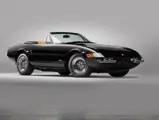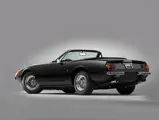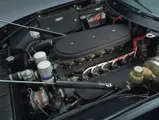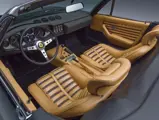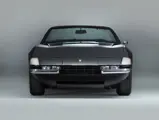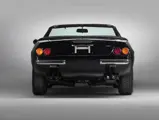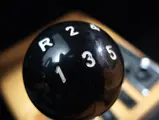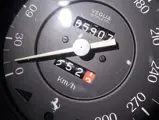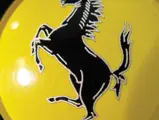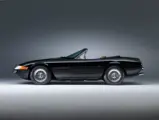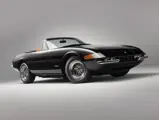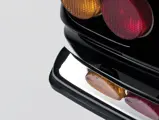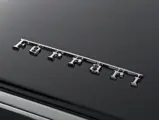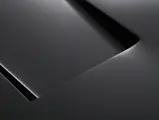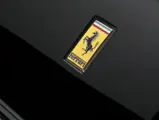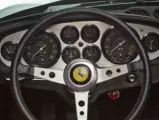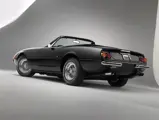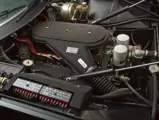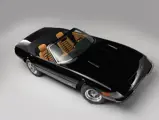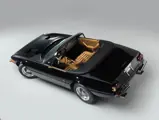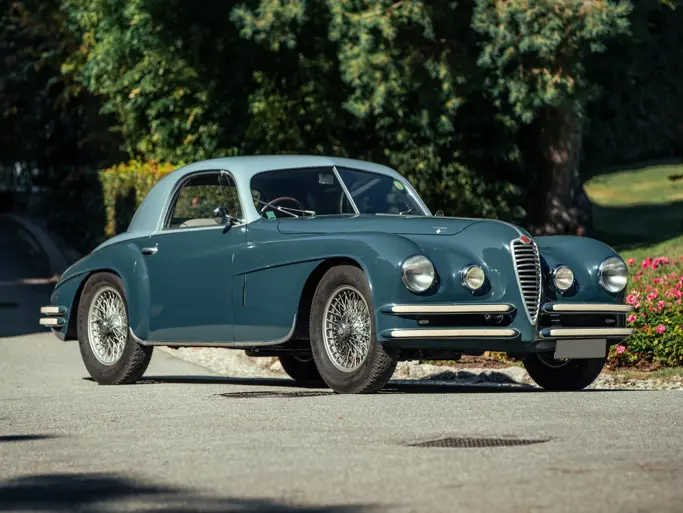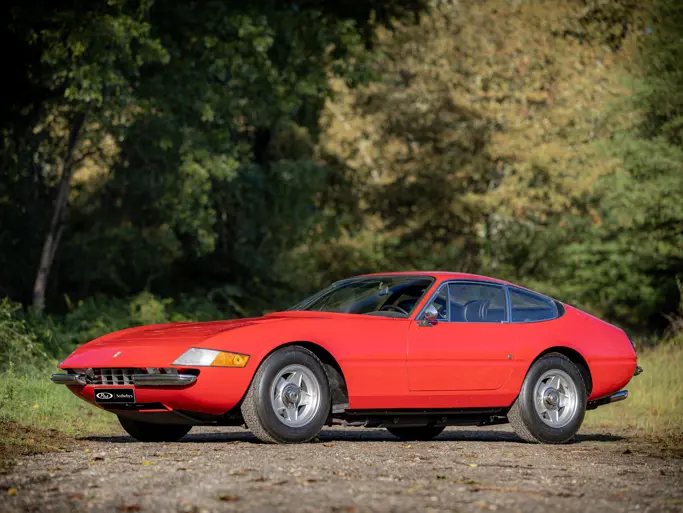Monaco 2012
1971 Ferrari 365 GTS/4 Daytona Spyder
{{lr.item.text}}
€1,008,000 EUR | Sold
 | Monaco, Monaco
| Monaco, Monaco
{{internetCurrentBid}}
{{internetTimeLeft}}

352 bhp, 4,380 cc DOHC V-12 engine with six Weber 40DCN20 carburettors, five-speed manual gearbox, four-wheel independent suspension, and four-wheel servo-assisted hydraulic disc brakes. Wheelbase: 2,400 mm (94.5")
• Ferrari Classiche certification, FCA Platinum Award winner
• One of only 18 European-specification, LHD examples
• Well-documented history; the third of 122 Daytona Spyders produced
• Complete with original tool roll and both Borrani and Cromodora wheels
Perhaps the most intriguing piece of history behind the immensely revered Ferrari 365 GTB/4 is its unofficial nickname, “Daytona”. Since Ferrari’s electrifying one-two-three victory at the 1967 24 Hours of Daytona was so monumental, the marque’s diehard enthusiasts felt that the forthcoming replacement for the 275 GTB/4 should bear the name “Daytona”, which had been used internally at Ferrari to commemorate the victory. Enzo Ferrari insisted, however, that the car’s technical nomenclature be used instead, in keeping with tradition.
Name aside, the 365 GTB/4 quickly became a legend in its own time as the last front-engine Ferrari GT designed before the marque’s business involvement with Fiat in 1969. In addition, the 365 GTB/4 was one of the last fully hand-assembled, regular production Ferraris, making it a uniquely hand-crafted masterpiece.
The 365 GTB/4 Berlinetta that replaced the earlier 275 GTB/4 in 1968 differed dramatically in styling, though the tubular steel chassis bore many similarities to its predecessor and provided superior balance. Where the curvaceous 275 GTB/4 was clearly a traditional Pininfarina design, the 365 GTB/4 was at once modern, edgy, sleek and forward-looking. Penned by Pininfarina’s Leonardo Fioravanti, who continues to maintain an independent styling studio, Fioravanti Srl., outside of Turin, the 365 GTB/4 features a number of styling cues that continue to influence modern Ferrari design.
Famed Modenese coachbuilding firm Scaglietti executed the striking body with hand-formed and hammer-welded steel used for every panel other than the doors, bonnet and boot lids, which were composed of lightweight aluminium alloy. Initially, the headlamps were covered in Perspex, though retractable headlamps were later introduced to comply with U.S. safety regulations imposed in 1971. The 365 GTB/4’s quad round tail lamps are an iconic design element seen on nearly every Ferrari produced to this day. The simplicity of the car’s tail, combined with the aggressiveness of four chrome tail pipes making their appearance below the bumper, makes a lasting impression on even the most seasoned Ferrari enthusiast.
The outgoing 275 GTB/4 lent its 60-degree V-12 engine to the 365 GTB/4, though it was enlarged from 3.3 to 4.4 litres or 4,390 cc. Power output rose accordingly. The new engine, designated Tipo 251, delivered 352 bhp and 315 foot-pounds of torque at 7,500 rpm through six Weber twin-choke carburettors. A five-speed manual gearbox was, of course, the only available transmission.
That the 365 GTB/4 was capable of a top speed three mph greater than its archrival, the Lamborghini Miura, was not a fact lost on contemporary media or enthusiasts eager to see the speedometer needle tickle 175 mph—nor was the car’s spectacular driving experience. The last great front-engine, rear-drive GT to emerge from Maranello for two decades, the 365 GTB/4 represents the ultimate expression of the concept.
Ferrari débuted the new model at the October 1968 Paris Salon. A handful of coupés were produced for customers in the 1968 model year. At the Frankfurt International Auto Show in September 1969, Ferrari unveiled a Spyder version of the car that was now unofficially nicknamed ‘Daytona.’ Unsurprisingly, the seductive drop-top enjoyed critical acclaim that continues unabated today.
The Frankfurt prototype show car was the only Spyder to be fitted with Perspex headlamps; all subsequent production models utilised retractable headlamps. Production of the Spyder and Berlinetta continued through 1973 before being replaced with the mid-engine 365 GT4 Berlinetta Boxer. Scaglietti also handled production of the bodies for the open-top Spyder.
In all, Ferrari produced just 122 Daytona Spyders, including the prototype, with 96 destined for the important U.S. market and just 25 (plus the prototype) built to European and UK (RHD) specifications. Of those, 18 were built to European specifications with left-hand drive, including the handsome example offered here, chassis 14415. While its serial number is the 10th in numerical sequence, according to the Ferrari Assembly Number, the car is in fact the third Daytona Spyder ever built. It was originally finished in Blu Dino (106-A-72) with a white stripe on the body flanks, a Nero interior and with the convertible top material reportedly supplied by the client.
According to Ferrari records, the car was delivered in Italy to a Sara Scapula, then later to John Baus, an employee of Chinetti, before being exported from Cherbourg, France to the United States by Luigi Chinetti Motors. By 1975, the car was owned by Ed Lazzarin of Miami, Florida and had since been repainted red. Subsequently, the car was damaged, and Mr. Lazzarin had the repairs completed by marque specialists Shelton Ferrari of Fort Lauderdale.
By the late-1980s, the Spyder had accumulated approximately 50,000 kms and remained under Lazzarin’s ownership before eventually being acquired in 1993 by an individual in Japan before going to noted American Ferrari collector Chris Cox. During a brief period of ownership with Mr Jim Mathews, 14415 was restored, repainted black and then acquired once more by Mr Cox, who brought the car to the Ferrari Club of America Annual Concours in Leesburg, Virginia, where it received the coveted Platinum Award in Class 5. In the 1998 Cavallino Classic held at the Breakers in Palm Beach, 14415 received the coveted Gold Award. Thereafter, the car remained in San Diego, California and then Arizona, driven sparingly and shown at several local events.
Since its acquisition by the current owner, the car has continued to see limited, careful use and has been maintained within a private collection by an in-house mechanic. This fantastic European-specification Daytona Spyder is sold with its original tool roll and offered complete with both Borrani wire-spoke and Cromodora wheels.
Powerful, sexy and tremendously fast in the best Ferrari tradition, the 365 GTS/4 and its 365 GTB/4 Spyder brethren remain some of the finest sports/GT cars ever produced by Ferrari and undoubtedly some of the most thrilling to drive. This wonderful example is further distinguished by its Ferrari Classiche certification and well-documented history, enhanced by its status as one of the very limited number of left-hand drive, European-specification Daytona Spyders originally produced.

